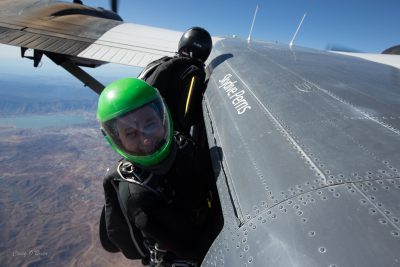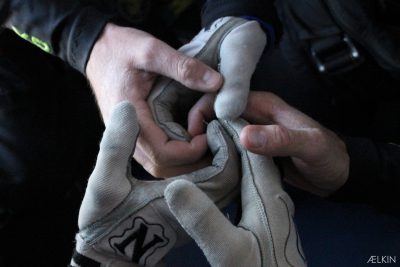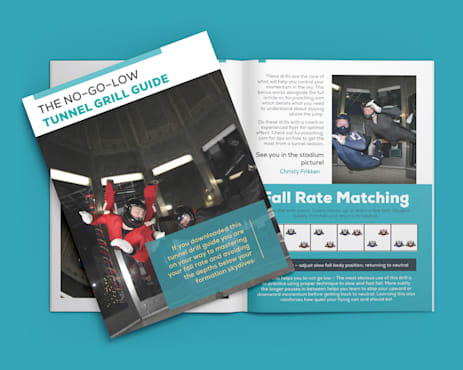How to calm down
Monday, January 4, 2021
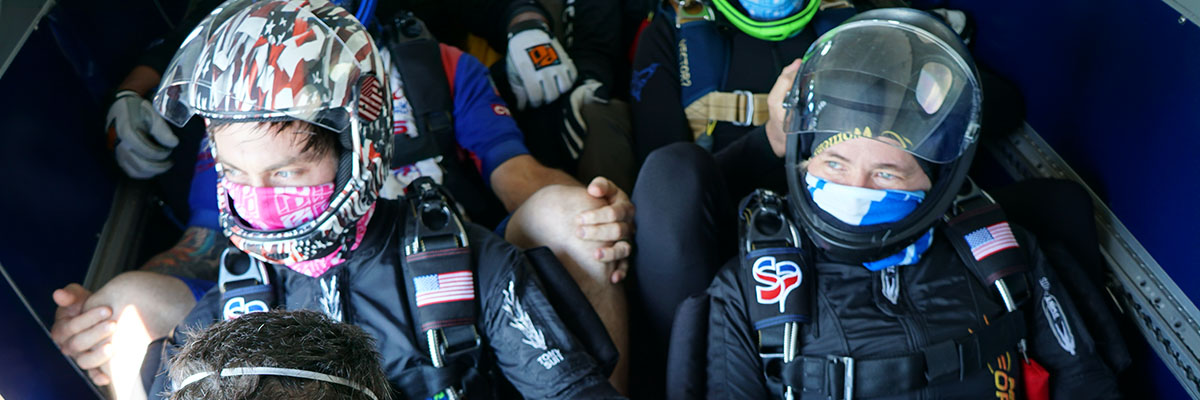
Your coach tells you to calm down all the time. You hear it repeated like a mantra in a big-way camp. That is all well and good, but no one tells you how to calm down when your heart is pounding in the heat of the moment.
Arousal level explanation
Arousal level is how pumped up you are. In some sports, you’ll see athletes hitting themselves, jumping up and down, trying to psych themselves up. Linebackers in American football are good examples of this. In other sports, like golf or archery, you see athletes meditating and listening to calming music.
These two extremes are responses to specific sport needs. If you need to lift a car, go for the crazed psycho routine. If you need to make smart decisions and execute fine motor skills, chilling will produce the best results.
Skydiving falls into the chill-out zone. You are moving around, but it isn’t a big muscle sport. It is about seeing, predicting, thinking, and choosing the best course of action at any given time.
Underneath the line, on the line, over the line
The term for this targeted state in skydiving is called “being on the line.” If you are on the line, you are neither overly excited nor overly calm. Your mission is to stay as close to that sweet spot as you can.
Being on the line is our target. Here is how to get to that state when advice to “just calm down” is easier said than done.
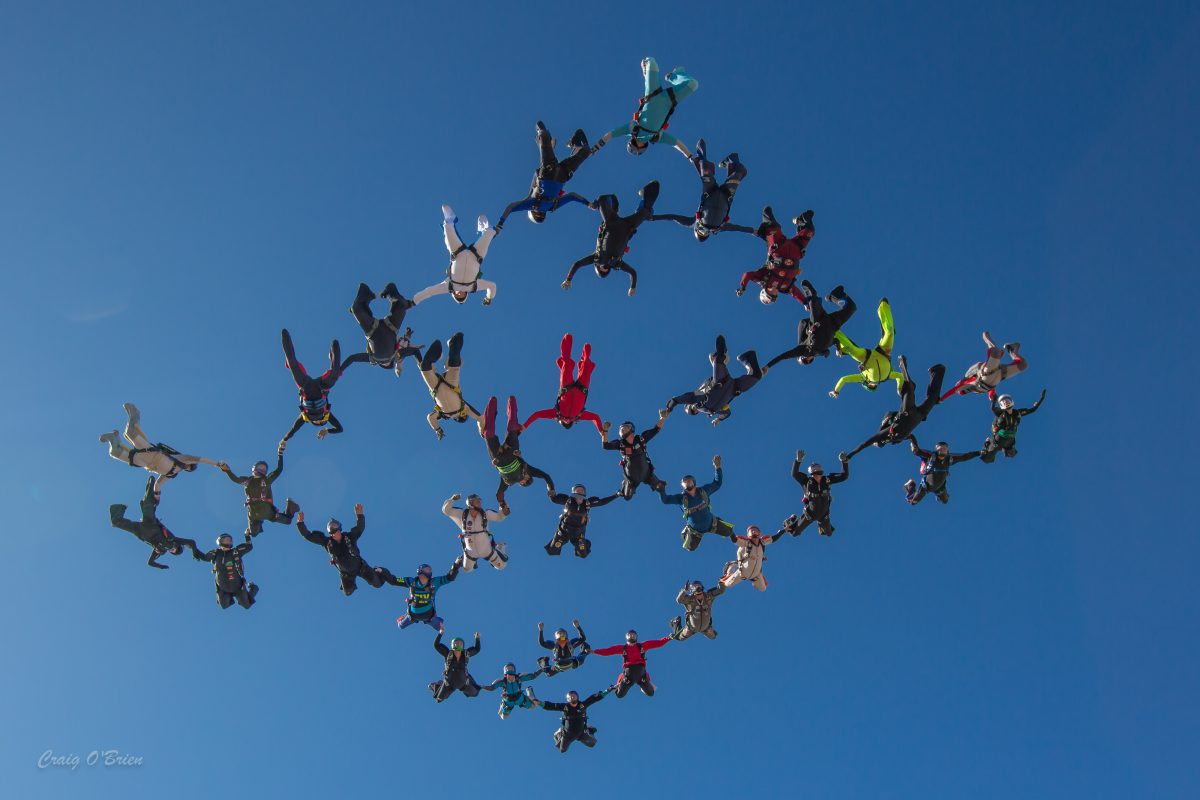
Start a logbook or worksheet
The first step is to define what your ideal personal zone feels like for you. Start keeping track of your arousal level on each jump—and the effect it has. You can do so right in your logbook with a simple 1-10 scale, or you can start a separate worksheet with more elaborate notes.
As you keep track, you should start to see your perfect performance level. You might even identify the triggers for what sends you out of your zone, which is our next stage.
Find triggers and situations
Think back to a time you were over the line or when you made a significant error. Then look back at your arousal level logbook or recall what happened just beforehand. Consider what your thoughts were, what you felt, what you saw, and what you were reacting to. Keep working backward to find the initial cause of what set you over the line.
Sometimes a jump starts over the line. Maybe something on the ground like a snide comment from a teammate, a harsh debrief, or a mistake from a previous skydive put you in a negative place. Whatever it was, you failed to reset your arousal level.
Write down each undesirable outcome and what led to it on your worksheet. The first step is going to help you recognize arousal level traps.
Examples
| Result | Trigger |
| I swiped for grips. | I felt rushed and behind because the last point was miskeyed. |
| I didn’t stop to pick up grips. | I panicked because I didn’t want to go low again. |
| I went low. | I didn’t stop in the stadium because I felt behind. |
| I was looking at my grips. | I thought, ‘Hurry up and get in so you don’t get yelled at on the ground.’ |
What you’d like to think instead
From the list you made above, choose a few triggers that might occur again. We are going to reprogram your response to these situations.
For each one, decide the rational thought you would rather have when that unwelcome feeling comes bubbling up. For example, if you felt rushed from a miskey, perhaps you’d like to think, The last point is over; I have time to build the next one smoothly.
I find it is helpful to come up with a shortcut word in addition to your rational replacement thought. An entire sentence is fantastic during prep, a walkthrough, and the plane ride. But in the sky, lengthy mental dialogues take up too much time. Instead, I pick a shortcut word or phrase to summarize the sentiment.
Examples
| Old Feeling/Thought | New Thought | Shortcut |
| I felt rushed and behind because the last point was miskeyed. | The last point is over; I always have time to build the next one smoothly. | Smooth wins. |
| I panicked because I didn’t want to go low again. | If I follow the process, look, stop, and match the fall rate, I will not go low. | Look, stop, match. |
| I didn’t stop in the stadium because I felt behind. | I always have the time to do things right. | Take your time. |
| I thought, Hurry up and get in so you don’t get yelled at on the ground. | “Getting in” is not the best measure of success; showing control and excellent discipline is the goal. | Patience and discipline |
Recognize, regroup, refocus
You should now have a list of tripwires, followed by what you would prefer to think and focus on in those moments. We are going to place these two together and introduce an intermediate step.
Recognize
The next time one of your triggers occurs, be it a thought or situation, you should be able to identify it. Merely thinking about it and making a list is surprisingly effective at tripping alarm bells in the future. It might even work for similar situations not specifically on your list.
Regroup
The middle step is to have a quick recomposing cue. This can be a simple action like taking a deep breath, a quick squeeze and release of a muscle, or a keyword like calm. The point is to stop the cycle and get back to a more neutral state.
Refocus
You’ve identified that one of your causes has occurred; you’ve recomposed yourself, now what? Now toss in that thought you’d rather think! If you are on the plane, you can introduce that full sentence if you like. If you are in freefall, use the shortcut word. Either way, it should refocus you on what you should be doing to be successful!
| Recognize | Regroup | Refocus |
| Miskeyed point | Breathe | The last point is over; I always have time to build the next one smoothly. |
| I don’t want to go low. | Stop! | Look, stop, match. |
| Feeling behind | Calm | Take your time. |
| Hurry up, rush! | Relax | Patience and discipline |
More tips
Visualizing
You can visualize these steps just as you do with the content of your skydives. To ingrain them, think about the trigger in the ordinary course of visualizing a skydive. Practice mentally responding how you intend to respond next time. When you practice this, add as much detail as you can. Try to reenact the emotional component if possible.
Plane routine
Being in a proper mindset starts in the plane. To improve your chances of staying calm through the jump, develop a consistent routine that works for you. For example, you could visualize at certain altitudes, repeat your goals, meditate, and focus on your breathing on the way to altitude.
Whatever procedure you set, choose to do the same thing every time. Consistency allows you to adjust as needed and test the effects, enabling you to optimize. The repetition and structure also help keep you in the zone by keeping you focused on the right things at the right time.
Meditation
Those of you who know me know that I am fairly skeptical, and I was suspicious of meditation at first. However, the research has been kind to mediation, and I eventually tried it.
At first, I just set a timer and tried to think of nothing. I failed hard. I stumbled on an app called Headspace, which explained how to mediate and provided audio guidance. It was amazing, and I wholeheartedly recommend it! It can help with focus and staying calm.
Identify your ideal arousal level. Notice the traps and reprogram your response to them. Mentally rehearse your new way of thinking. This will help you stay cool as a cucumber in your next skydive and lead to better jumps!
Join a Fury event and we can work on your chill now!
Search:
Event
Venue
Date
SCSL - 4way Meet (Perris)
Skydive Perris
Register
Frikken Crazy 8s
Skydive Perris
Register
Frikken "One-Shot" 21-way
Skydive Perris
Register
Coach the Coach with Christy Frikken - Online/Hybrid
Skydive Perris
Register
Broke Ass 4way
iFly Oceanside
Register
Perris Organizer's present Big Way Basics with Christy Frikken
Skydive Perris
Register
Ghost Nationals
Skydive Perris
Register
Tags: competition, learning
